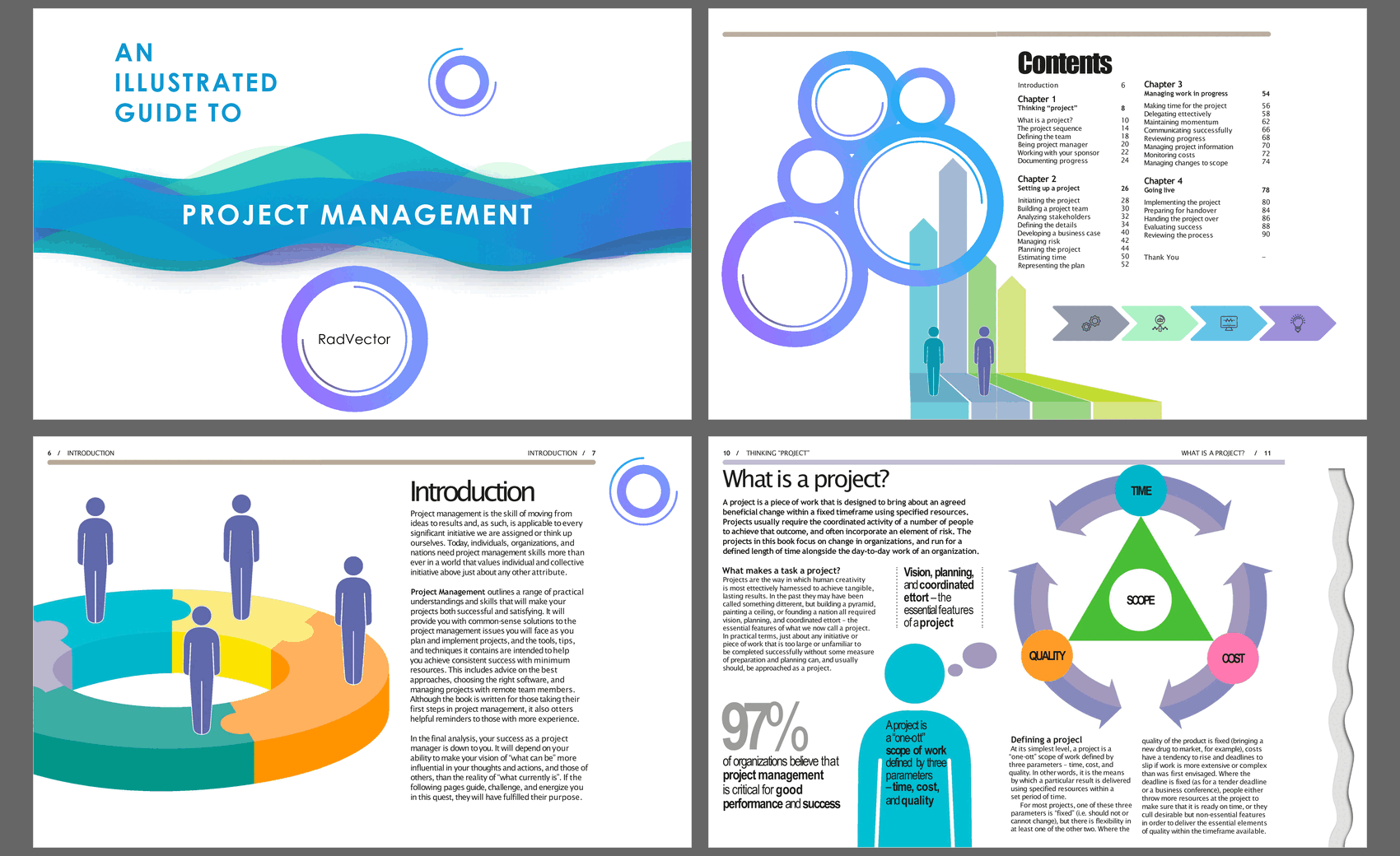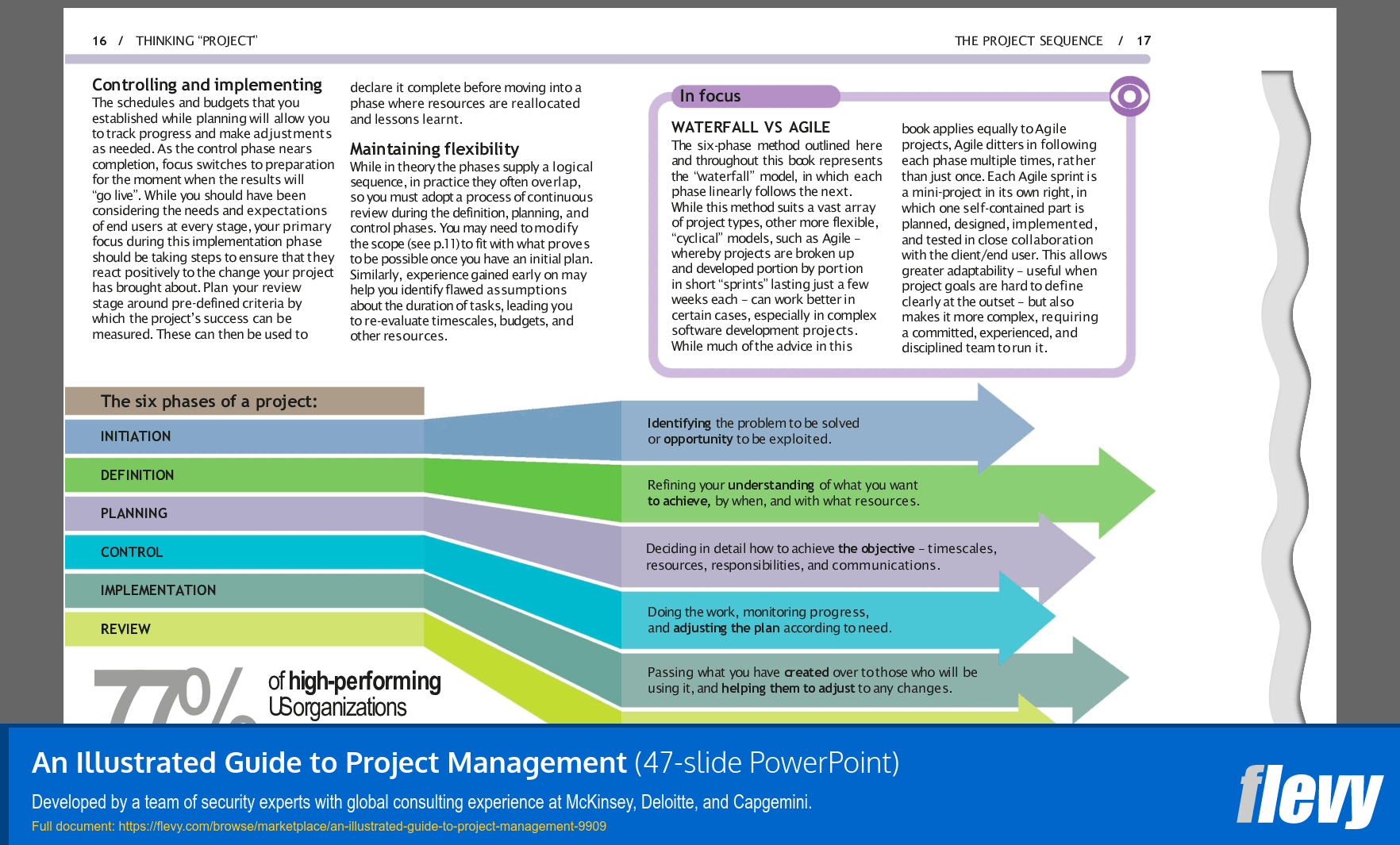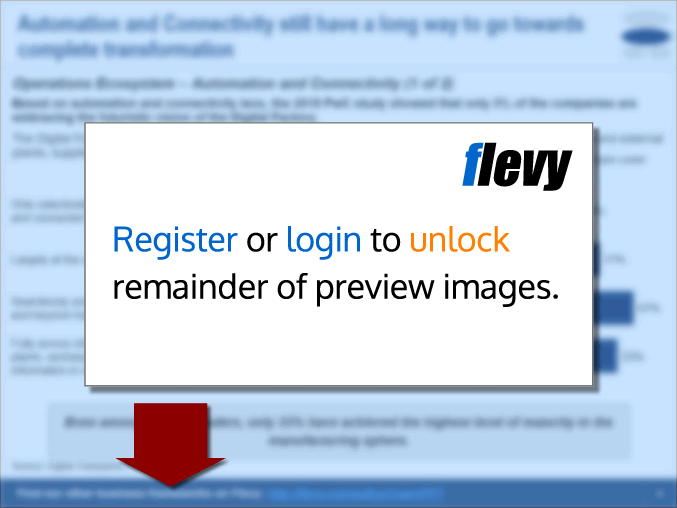Illustrated Guide to Project Management (PowerPoint PPTX Slide Deck)
PowerPoint (PPTX) 47 Slides
PROJECT MANAGEMENT PPT DESCRIPTION
An Illustrated Guide to Project Management is a practical and visual journey through the essential stages of managing projects, designed to simplify concepts and provide professionals with clear, actionable insights.
The presentation begins with Chapter 1: Thinking "project." Here, the audience is introduced to the foundations of project management, starting with the question: *What is a project?* It explores the project sequence, the importance of defining roles, and the responsibility of the project manager. This chapter also emphasizes the critical relationship with sponsors, and the necessity of documenting progress in a structured, traceable manner. Through visual aids, participants gain clarity on how projects are framed, initiated, and supported.
Chapter 2: Setting up a project focuses on the groundwork required before execution. It walks through building an effective project team, analyzing stakeholders, and carefully defining project details. Developing a strong business case is highlighted as a cornerstone for gaining approval and support. Risk management, project planning, and time estimation are explained with illustrative examples that demonstrate the balance between ambition and feasibility. The chapter concludes by showing how to represent the project plan visually, making it easier to communicate and align with the wider team.
Moving into Chapter 3: Managing work in progress, the presentation shifts to execution and monitoring. Topics such as making dedicated time for projects, delegating effectively, and maintaining momentum are explored. Communication is addressed as a vital factor, alongside tools and techniques for reviewing progress, managing information, and controlling costs. The chapter also highlights how to handle inevitable changes in scope, turning challenges into opportunities for refinement rather than obstacles.
Finally, Chapter 4: Going live addresses the culmination of all efforts. It guides participants through implementing the project, preparing for handover, and ensuring a smooth transition. The chapter emphasizes the importance of evaluating success against initial goals and reviewing the overall process to capture lessons learned for future projects.
Throughout the presentation, illustrations and visual frameworks bring clarity to concepts, making them easier to understand and retain. By blending structured knowledge with engaging visuals, this guide transforms project management from a dense theoretical subject into a dynamic, practical skill set. It provides a roadmap for anyone seeking to initiate, manage, and deliver projects successfully, regardless of industry or scale.
Got a question about the product? Email us at support@flevy.com or ask the author directly by using the "Ask the Author a Question" form. If you cannot view the preview above this document description, go here to view the large preview instead.
Source: Best Practices in Project Management PowerPoint Slides: Illustrated Guide to Project Management PowerPoint (PPTX) Presentation Slide Deck, RadVector Consulting









